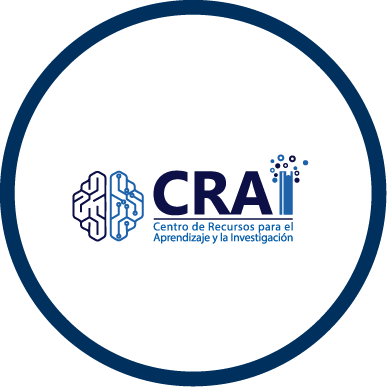Determinación de la actividad antiviral in vitro de derivados de miricetina de Marcetia taxifolia contra los virus del chikungunya, zika y dengue.
Zika, dengue and chikungunya viruses are implicated in emerging and re-emerging epidemics in tropical and subtropical countries such as Colombia, becoming a public health problem, with a negative impact on the quality of life of the population due to the morbidity and mortality associated with their...
Guardado en:
| Autor principal: | |
|---|---|
| Otros Autores: | |
| Formato: | Trabajo de grado (Pregrado y/o Especialización) |
| Lenguaje: | spa |
| Publicado: |
Universidad Antonio Nariño
2023
|
| Materias: | |
| Acceso en línea: | http://repositorio.uan.edu.co/handle/123456789/7967 |
| Etiquetas: |
Agregar Etiqueta
Sin Etiquetas, Sea el primero en etiquetar este registro!
|
| _version_ | 1812647903413403648 |
|---|---|
| author | Cuéllar Quimbaya, Andrés Felipe |
| author2 | Losada Barragán, Mónica |
| author_facet | Losada Barragán, Mónica Cuéllar Quimbaya, Andrés Felipe |
| author_sort | Cuéllar Quimbaya, Andrés Felipe |
| collection | DSpace |
| description | Zika, dengue and chikungunya viruses are implicated in emerging and re-emerging epidemics in tropical
and subtropical countries such as Colombia, becoming a public health problem, with a negative impact
on the quality of life of the population due to the morbidity and mortality associated with their sequelae.
Today there is no specific antiviral treatment, only for dengue there is a vaccine whose efficacy is not
clear. This makes the development of therapeutic agents essential. Plants are a key point in the search
for new molecules with potential biological action since their compounds have medicinal properties.
Marcetia taxifolia is a shrub of the Melastomataceae family, for which secondary metabolites have been
described with in vitro antiviral activity against the human immunodeficiency virus type 1. Preclinical
evaluations of potential antivirals require reliable and reproducible methods. For this reason, an RTqPCR method was standardized for the detection and quantification of viral RNA from cell cultures,
with efficiencies of 100.6%, 99.63% and 100.8%, for chikungunya, zika and dengue-2, respectively.
BHK-21 was selected as the cell line that allows greater viral replication of clinical isolates compared
to Vero. Additionally, the antiviral activity of derivatives of the extract of Marcetia taxifolia myricetin3-rhamnoside and myricetin-3-(6-rhamnogalactoside) was evaluated in the developed in vitro model,
obtaining that the two compounds presented promising EC50 < 50µg/mL against the three viruses, on
the other hand the lower effectiveness of myricetin-3-(6-rhamnogalactoside) in the case of chikungunya
and zika. These data provide the first evidence for the in vitro anti-chikungunya, anti-Zika and antidengue-2 activity of myricetin-3-rhamnoside and myricetin-3-(6-rhamnogalactoside). |
| format | Trabajo de grado (Pregrado y/o Especialización) |
| id | repositorio.uan.edu.co-123456789-7967 |
| institution | Repositorio Digital UAN |
| language | spa |
| publishDate | 2023 |
| publisher | Universidad Antonio Nariño |
| record_format | dspace |
| spelling | repositorio.uan.edu.co-123456789-79672024-10-09T23:05:36Z Determinación de la actividad antiviral in vitro de derivados de miricetina de Marcetia taxifolia contra los virus del chikungunya, zika y dengue. Cuéllar Quimbaya, Andrés Felipe Losada Barragán, Mónica Upegui Zapata, Yulieth Alexandra Arbovirus Zika Dengue Chikungunya Antiviral T 40.23 C967d Arbovirus Zika Dengue Chikungunya Antiviral Zika, dengue and chikungunya viruses are implicated in emerging and re-emerging epidemics in tropical and subtropical countries such as Colombia, becoming a public health problem, with a negative impact on the quality of life of the population due to the morbidity and mortality associated with their sequelae. Today there is no specific antiviral treatment, only for dengue there is a vaccine whose efficacy is not clear. This makes the development of therapeutic agents essential. Plants are a key point in the search for new molecules with potential biological action since their compounds have medicinal properties. Marcetia taxifolia is a shrub of the Melastomataceae family, for which secondary metabolites have been described with in vitro antiviral activity against the human immunodeficiency virus type 1. Preclinical evaluations of potential antivirals require reliable and reproducible methods. For this reason, an RTqPCR method was standardized for the detection and quantification of viral RNA from cell cultures, with efficiencies of 100.6%, 99.63% and 100.8%, for chikungunya, zika and dengue-2, respectively. BHK-21 was selected as the cell line that allows greater viral replication of clinical isolates compared to Vero. Additionally, the antiviral activity of derivatives of the extract of Marcetia taxifolia myricetin3-rhamnoside and myricetin-3-(6-rhamnogalactoside) was evaluated in the developed in vitro model, obtaining that the two compounds presented promising EC50 < 50µg/mL against the three viruses, on the other hand the lower effectiveness of myricetin-3-(6-rhamnogalactoside) in the case of chikungunya and zika. These data provide the first evidence for the in vitro anti-chikungunya, anti-Zika and antidengue-2 activity of myricetin-3-rhamnoside and myricetin-3-(6-rhamnogalactoside). Los virus zika, dengue y chikungunya están implicados en epidemias emergentes y reemergentes en países tropicales y subtropicales como Colombia, convirtiéndose en un problema de salud pública, con impacto negativo en la calidad de vida de la población debido a la morbimortalidad asociadas a sus secuelas. Hoy en día no existe un tratamiento antiviral específico, solo para dengue se cuenta con una vacuna de la cual no se tiene claridad en su eficacia. Lo que hace primordial el desarrollo de agentes terapéuticos. Las plantas son un punto clave en la búsqueda de nuevas moléculas con potencial acción biológica, ya que sus compuestos tienen propiedades medicinales, Marcetia taxifolia es un arbusto de la familia Melastomataceae, para la cual se han descrito metabolitos secundarios con actividad antiviral in vitro contra el virus de inmunodeficiencia humana tipo 1. Las evaluaciones preclínicas de potenciales antivirales requieren métodos confiables y reproducibles. Por ello se estandarizó un método de RTqPCR para la detección y cuantificación de ARN viral a partir de cultivos celulares, con eficiencias del 100.6%, 99.63% y 100.8% , para chikungunya, zika y dengue-2 respectivamente. Se seleccionó BHK21 como la linea celular que permite mayor replicacion viral de los aislamientos clinicos respecto a Vero. Adicionalmente, la actividad antiviral de derivados del extracto de Marcetia taxifolia miricetina3-ramnósido y miricetina-3-(6-ramnogalactosido) se evaluó en el modelo in vitro desarrollado, obteniendo que los dos compuestos presentaron CE50 promisorias < 50µg/mL contra los tres virus, por otro lado la menor efectividad de dio con miricetina-3-(6-ramnogalactosido) en el caso de chikungunya y zika. Estos datos proporcionan la primera evidencia de la actividad anti-chikungunya, anti-zika y antidengue-2 in vitro de miricetina-3-ramnósido y miricetina-3-(6-ramnogalactosido). Bioquímico(a) Pregrado Presencial Investigación 2023-04-15T16:32:10Z 2023-04-15T16:32:10Z 2022-11-18 Trabajo de grado (Pregrado y/o Especialización) info:eu-repo/semantics/acceptedVersion http://purl.org/coar/resource_type/c_7a1f http://purl.org/coar/version/c_970fb48d4fbd8a85 http://repositorio.uan.edu.co/handle/123456789/7967 Álvarez-Díaz, D. A., Quintero, P. A., Peláez-Carvajal, D., Ajami, N. J., & Usme-Ciro, J. A. (2019). Novel panserotype control RNA for dengue virus typing through real-time reverse transcription-polymerase chain reaction. Journal of Virological Methods, 271. https://doi.org/10.1016/j.jviromet.2019.113677 Álvarez-Díaz, D. A., Valencia-Álvarez, E., Rivera, J. A., Rengifo, A. C., Usme-Ciro, J. A., Peláez-Carvajal, D., Lozano-Jiménez, Y. Y., & Torres-Fernández, O. (2021a). An updated RT-qPCR assay for the simultaneous detection and quantification of chikungunya, dengue and zika viruses. Infection, Genetics and Evolution, 93. https://doi.org/10.1016/j.meegid.2021.104967 Alvis-Zakzuk, N. J., Díaz-Jiménez, D., Castillo-Rodríguez, L., Castañeda-Orjuela, C., Paternina-Caicedo, Á., Pinzón-Redondo, H., Carrasquilla-Sotomayor, M., Alvis-Guzmán, N., & De La Hoz-Restrepo, F. (2018). Economic Costs of Chikungunya Virus in Colombia. Value in Health Regional Issues, 17(51), 32–37. https://doi.org/10.1016/j.vhri.2018.01.004 Baptista, J., Chávez, K., Torrico, F., Trejo, E., Garcia, C. C., Urbina, J., Carrasco, J., Taddei, A., Tillett, S., & Suárez, A. I. (2016). Constituyentes químicos y actividad antiinflamatoria de Marcetia taxifolia. In Scientific Journal from the Experimental Faculty of Sciences, at the Universidad del Zulia (Vol. 24). Abril-Junio. Begum, F., Das, S., Mukherjee, D., Mal, S., & Ray, U. (2019). Insight into the tropism of dengue virus in humans. In Viruses (Vol. 11, Issue 12). MDPI AG. https://doi.org/10.3390/v11121136 Behl, T., Rocchetti, G., Chadha, S., Zengin, G., Bungau, S., Kumar, A., Mehta, V., Uddin, M. S., Khullar, G., Setia, D., Arora, S., Sinan, K. I., Ak, G., Putnik, P., Gallo, M., & Montesano, D. (2021). Phytochemicals from Plant Foods as Potential Source of Antiviral Agents: An Overview. Pharmaceuticals, 14(4). https://doi.org/10.3390/ph14040381 Boonham, N., Kreuze, J., Winter, S., van der Vlugt, R., Bergervoet, J., Tomlinson, J., & Mumford, R. (2014). Methods in virus diagnostics: From ELISA to next generation sequencing. Virus Research, 186, 20–31. https://doi.org/10.1016/j.virusres.2013.12.007 Brinton, M. A., & Basu, M. (2015). Functions of the 3’ and 5’ genome RNA regions of members of the genus Flavivirus. Virus Research, 206, 108–119. https://doi.org/10.1016/j.virusres.2015.02.006 Buendia-Atencio, C., Pieffet, G. P., Montoya-Vargas, S., Martínez Bernal, J. A., Rangel, H. R., Muñoz, A. L., Losada-Barragán, M., Segura, N. A., Torres, O. A., Bello, F., Suárez, A. I., & Rodríguez, A. K. (2021). Inverse Molecular Docking Study of NS3-Helicase and NS5-RNA Polymerase of Zika Virus as Possible Therapeutic Targets of Ligands Derived from Marcetia taxifolia and Its Imp Carabali, M., Jaramillo, G.-I., Rivera, V., Restrepo, B. N., Zinser, K., & gloria.jaramillor@campusucc.edu.co. (2019). Biomedica : revista del Instituto Nacional de Salud. In XVII Congreso Colombiano de Parasitología y Medicina Tropical. Universidad Cooperativa de Colombia, Facultad de Ciencias de la Salud, Medicina, Villavicencio. https://repository.ucc.edu.co/handle/20.500.12494/18362 instname:Universidad Antonio Nariño reponame:Repositorio Institucional UAN repourl:https://repositorio.uan.edu.co/ spa Acceso abierto Attribution-NonCommercial-NoDerivatives 4.0 International (CC BY-NC-ND 4.0) https://creativecommons.org/licenses/by-nc-nd/4.0/ info:eu-repo/semantics/openAccess http://purl.org/coar/access_right/c_abf2 application/pdf application/pdf application/pdf Universidad Antonio Nariño Bioquímica Facultad de Ciencias Bogotá - Circunvalar |
| spellingShingle | Arbovirus Zika Dengue Chikungunya Antiviral T 40.23 C967d Arbovirus Zika Dengue Chikungunya Antiviral Cuéllar Quimbaya, Andrés Felipe Determinación de la actividad antiviral in vitro de derivados de miricetina de Marcetia taxifolia contra los virus del chikungunya, zika y dengue. |
| title | Determinación de la actividad antiviral in vitro de derivados de miricetina de Marcetia taxifolia contra los virus del chikungunya, zika y dengue. |
| title_full | Determinación de la actividad antiviral in vitro de derivados de miricetina de Marcetia taxifolia contra los virus del chikungunya, zika y dengue. |
| title_fullStr | Determinación de la actividad antiviral in vitro de derivados de miricetina de Marcetia taxifolia contra los virus del chikungunya, zika y dengue. |
| title_full_unstemmed | Determinación de la actividad antiviral in vitro de derivados de miricetina de Marcetia taxifolia contra los virus del chikungunya, zika y dengue. |
| title_short | Determinación de la actividad antiviral in vitro de derivados de miricetina de Marcetia taxifolia contra los virus del chikungunya, zika y dengue. |
| title_sort | determinacion de la actividad antiviral in vitro de derivados de miricetina de marcetia taxifolia contra los virus del chikungunya zika y dengue |
| topic | Arbovirus Zika Dengue Chikungunya Antiviral T 40.23 C967d Arbovirus Zika Dengue Chikungunya Antiviral |
| url | http://repositorio.uan.edu.co/handle/123456789/7967 |
| work_keys_str_mv | AT cuellarquimbayaandresfelipe determinaciondelaactividadantiviralinvitrodederivadosdemiricetinademarcetiataxifoliacontralosvirusdelchikungunyazikaydengue |




